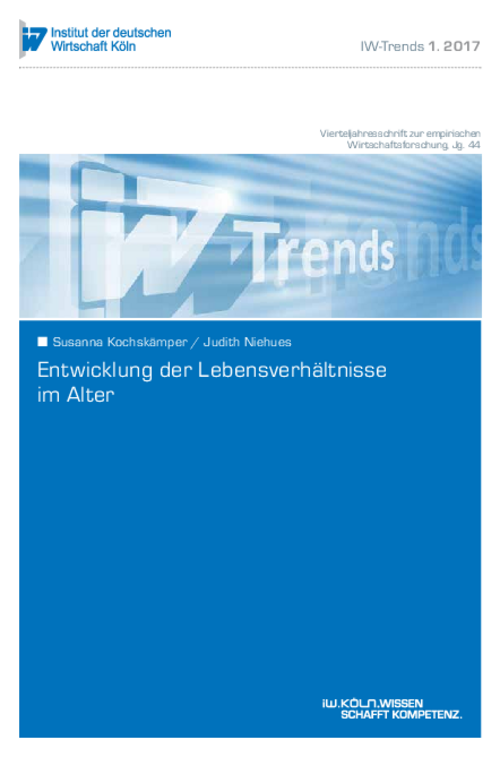Whenever the question of social justice is debated, one key issue inevitably arises: the standard of living of the elderly population and the degree to which they share in society’s prosperity.

Developments in the Standard of Living of the Elderly Population
IW-Trends

Whenever the question of social justice is debated, one key issue inevitably arises: the standard of living of the elderly population and the degree to which they share in society’s prosperity.
A descriptive analysis of the living standard of the older generation in Germany using data from the Socio-Economic Panel shows that their relative income position has improved considerably since the mid-1980s. On average, the retired population has seen higher increases in real income over the last three decades than younger cohorts. The share of older people in the lower income quintile has correspondingly declined, with more and more senior citizens finding themselves in the middle and upper income brackets. In line with this, the average risk of poverty in old age is perceptibly lower than that for younger groups. However, the relative welfare of the elderly varies widely, depending on their former employment status and supplementary sources of income. For example, earned income is more important for the (formerly) self-employed and pensioners in the upper income bracket than for formerly dependent employees. Household structure also has a bearing on pensioners’ income status. In contrast to the population as a whole, the proportion of the elderly living alone has decreased markedly since the mid-1980s. This must have had a restraining influence on the development of the risk of poverty. However, in view of the relatively high proportion of single-person households and those at risk of poverty in eastern Germany, this region faces a rising risk of old-age poverty unless the younger cohorts in particular can manage to lower their relatively high poverty risk. All in all, the empirical findings do not suggest any need for policy change, especially since any corrective intervention in the statutory pension insurance’s pay-as-you-go system will always need to bear in mind the distribution effects on younger generations.

Susanna Kochskämper / Judith Niehues: Entwicklung der Lebensverhältnisse im Alter
IW-Trends

More on the topic

A Macroeconomic Analysis of Wage-Price Spirals
The subject of this Analysis is the forms that wage-price spirals can take and how they influence macroeconomic stability and inflationary trends in Germany.
IW
IW Distribution Report 2023: Attitudes towards social mobility
Fundamentally linked to the social market economy is the idea that everyone has the opportunity for social advancement, regardless of their social background, and that children should be better off than their parents.
IW